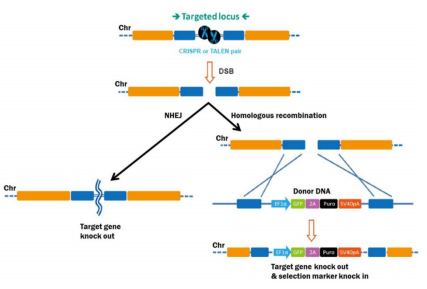As detailed in a separate post, bit.bio have developed a novel cellular reprogramming technology, opti-ox™1 (optimized inducible overexpression), that can generate functional cells with high consistency from human induced pluripotent stem cells (iPSCs). opti-ox overcomes gene silencing and enables controlled expression of transcription factors, and as a result, deterministic induction of a new cell identity. The resulting mature cells are physiologically relevant and phenotypically characterised, and for the first time, available at scale, offering predictive, in vitro, cells for research and drug screening.
Here we’ll be taking a closer look at the products already available for researchers. As the technology can be applied to generate many other mature cell types, more will be coming soon, including CNS cells, immune cells, and cells for toxicology and disease modelling.
The first human iPSC-derived products developed using opti-ox are the ioGlutamatergic Neurons and ioSkeletal Myocytes, which are both available across Europe through tebu-bio. There will be more to follow…
Human iPSc-derived functional glutamatergic neurons for research and drug discovery
ioGlutamatergic Neurons have been reprogrammed from human iPSCS using a precise reprogramming technology: opti-ox¹. Human stem cells, within days, convert into mature and functional glutamatergic neurons providing a reliable human model for the study of neurological activity and a robust platform to advance CNS drug discovery programs in a relevant human cell type.
ioGlutamatergic Neurons generated by NGN2-driven reprogramming of iPSCs using opti-ox technology
Glutamatergic neuron-specific markers expression
ioGlutamatergic Neurons are highly defined, consisting mainly of glutamatergic neurons (>80%) characterised by the expression of the glutamate transporter genes VGLUT1 and VGLUT2. The minor remaining fraction of the neuronal population express marker genes of cholinergic neurons. A bulk RNA-seq analysis shows that ioGlutamatergic Neurons have a rostral CNS identity and express the classical cortical marker genes FOXG1 and TBR1 (data not shown). These cells are ready for experimentation as early as two days post-revival and form functional neural networks within 13 days.

ioGlutamatergic Neurons display neuronal activity that matures over-time

ioGlutamatergic Neurons after revival over the course of the first 11 days

Cells arrive ready to plate
ioGlutamatergic Neurons are delivered in a cryopreserved format and are programmed to rapidly mature upon revival in a simple two-step protocol. Cells are kept in a single culture medium formulation from revival, with fully disclosed composition allowing modifications to fit your bespoke experiments.

ioGlutamatergic Neurons are compatible with plates ranging from 6 to 384 wells and validated for HTRF® and CellTiter-Glo® assays2. Cells are available in two vial sizes, tailored to suit your experimental needs with minimal waste. Recommended seeding density for ioGlutamatergic Neurons is 30,000 cells/cm2, compared with up to 250,000 cells/cm2 for other available products on the market.

Applications
Ready-to-culture cells are suitable as models for research in cell-type specific biology, target validation and drug screening in pharmaceutical R&D, and toxicology testing.
- Research and disease modelling
- Neurotoxicology
- High-throughput screening
- Genetic screening (e.g. CRISPR screening)
- Patch clamp and multi-electrode array (MEA)
- 3D bioprinting3
Human iPSC-derived functional skeletal myocytes for research and drug discovery
Introducing highly-defined, consistent and reliable human muscle cells for research, disease modelling and high throughput screening across areas such as muscle, neuromuscular, and associated metabolic disorders. ioSkeletal Myocytes have been reprogrammed from human induced pluripotent stem cells (iPSCs) using the same precise reprogramming technology: opti-ox. Cells demonstrate robust expression of components of the contractile apparatus and form striated, multinucleated, myocytes by Day 10 post revival, that contract in response to acetylcholine.
ioSkeletal Myocytes generated by MYOD1-driven reprogramming of iPSCs using opti-ox technology
ioSkeletal Myocytes express skeletal myocyte-specific markers

Cells demonstrate classical myocyte morphology

Cells demonstrate gene expression of key myogenic markers following reprogramming

Cells express the insulin regulated glucose transporter GLUT4, critical for metabolic studies

* Dougall Norris & Daniel Fazakerley, Wellcome-MRC Institute of Metabolic Science
Cells suitable for contractility assays
By Day 10 post-revival, cells demonstrate a strong contractile response upon addition of acetylcholine, providing a suitable human muscle model for contractility assays. Spontaneous contraction is also observed during continuous culture (data not shown).
Cells arrive ready to plate
ioSkeletal Myocytes are delivered in a cryopreserved format and are programmed to rapidly mature upon revival in the recommended medium. Cells are kept in a single culture medium formulation from revival, with fully disclosed composition allowing modifications to fit your bespoke experiments.

Available in two vial sizes, tailored to suit your experimental needs with minimal waste

Applications
- Muscle, neuromuscular and metabolic research and disease modelling
- High throughput screening
- Contractility assays
- 3D cocultures
- Genetic screening (e.g. CRISPR screening)
Any questions? We’ll be pleased to help, get in touch with us through your local tebu-bio office.
References
(1) “Inducible and Deterministic Forward Programming of Human Pluripotent Stem Cells into Neurons, Skeletal Myocytes, and Oligodendrocytes” Pawlowski et al., Stem Cell Report 2017 Apr 11; 8(4): 803–812. 10.1016/j.stemcr.2017.02.016
(2) “Molecular and functional characterization of stem cells-derived glutamatergic neurons in support of drug discovery applications” Iovino, et al., 2019. Charles River Laboratories.
(3) “Lipid-Bilayer-Supported 3D Printing of Human Cerebral Cortex Cells Reveals Developmental Interactions.” Zhou et al., Advanced Materials 2020, 32:200218.



